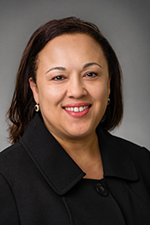April 5, 2017
States Demonstrate Public Value
As the federal transition continues, public discourse about the role of the federal government in the arts ecosystem reveals that there is much work to be done to satisfactorily lift up the public benefits achieved by government investments in the arts. As we collectively go about enabling effective arts programs and advocating for the arts, I’m hearing from a number of you about your efforts, and I really appreciate that. Keep the communication flowing! It’s one of the ways we bring great work and ideas from individual state arts agencies to benefit us all. To that end, here are a few ideas worth sharing.
From South Carolina
Our friends at the South Carolina Arts Commission (SCAC) recently convened their first advisors’ meeting for The Art of Community: Rural SC. The initiative, supported in part by the U.S. Department of Agriculture Rural Development, advances rural development through the arts, culture and creative placemaking. Working with citizen based teams from six small communities, the program is quickly fostering new pride of place as well as considerations of what’s possible, present and future, for each community. Diverse teams use creative placemaking techniques as they see and imagine their communities through new eyes, exploring assets previously undiscovered—and very much in the spirit of imagining what can be. Emerging young leaders and local mavens are inspired and are fueling local action to create vibrant communities.
I was with these community members last month, as news of recommended federal arts budget cuts became public. SCAC Program Director for Arts Participation Susan DuPlessis reflects on that experience: “While the national press was considering the relevance of arts and culture funding in our country, we were living it, breathing it, seeing it and tasting it. This first advisors’ meeting showcased what this new initiative is about: we heard from our mavens—what they experienced and how surprised they were to be asked; we heard from our young voices and know that our ‘next generation’ is there, willing and able—just waiting to be asked; we heard from our advisory cochairs and advisory members who stepped in to guide and connect us; we heard from special guests that this work connects us in South Carolina to a national rural frame gaining momentum, interest and relevance.”
I was so fortunate to be in rural South Carolina at that moment, experiencing the very essence and meaning of public support for the arts. I was privileged to stand beside South Carolina citizens as they showcased and discussed their power to create opportunities through the arts and creative placemaking, creating a new day for their communities. Thanks to SCAC Executive Director Ken May, Susan DuPlessis and the citizens of Allendale, Bamberg, Barnwell, Colleton, Hampton and Jasper counties for sharing their vision and their work to lead change and create new opportunities for six counties in southern South Carolina.
From Rhode Island
The Rhode Island State Council on the Arts (RISCA) issued a “call for stories” from Rhode Islanders about how the arts have impacted the personal and professional lives of its citizens. The endeavor comes as the agency celebrates its 50th anniversary. Wisely, RISCA will use the stories not only to celebrate its 50th milestone, but also to bring to life the understanding that public investments in the arts have a unique and important role to play in promoting vibrant community life. Shining a light on these stories is particularly important today, as public discourse about the role of public arts funding is at a critical juncture.
From North Dakota
Recently, North Dakota Council on the Arts Executive Director Beth Klingenstein assisted the Music Teachers National Association (MTNA) in developing its statement in response to the recent cuts the White House proposed for the National Endowment for the Arts (NEA). As a NASAA member and MTNA board member, Beth was well positioned to bring NASAA’s resources (statement, fact sheets, et al.) to bear in helping the MTNA board craft its message and call to action to its 22,000 members. Beth’s great work demonstrates that we in the state arts agency community can take opportunities to use NASAA’s resources to assist a variety of state, regional and national stakeholders in being effective advocates. Read the MTNA Statement on the National Endowment for the Arts, which links to NASAA’s statement.
Coming from NASAA
NASAA has been spreading the good word about the importance of the NEA and reinforcing what the federal agency’s support means to American communities. In the coming days, we look forward to adding to your toolboxes by publishing our newly revised edition of Why Should Government Support the Arts? We are refocusing this publication on today’s political environment, and we look forward to sharing the new document with you soon.
A Thank You
NASAA is grateful for your communications with members of Congress about the impact of NEA investments in your state. As you connect with your representatives, please remember to loop back to NASAA Legislative Counsel Isaac Brown and me to let us know what you learn. E-mail us anytime; we appreciate the feedback and are available to you as you need us. We thank you for continuing to take the time to reach out to your members of Congress, and Appropriations Committee members in particular.
In this Issue
Legislative Update
More Notes from NASAA
From the CEO
Research on Demand
SubscribeSubscribe
×
To receive information regarding updates to our newslettter. Please fill out the form below.

